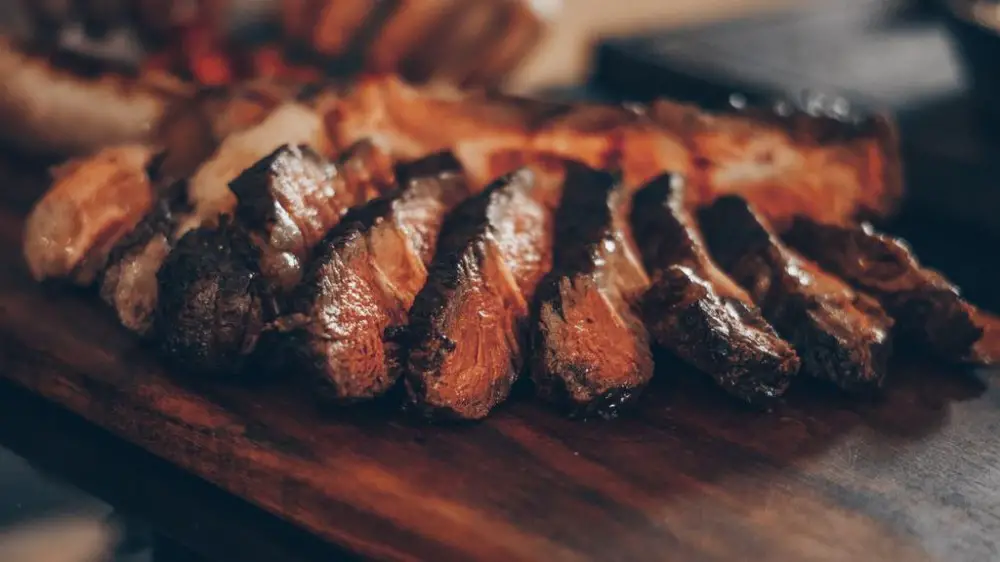In many restaurants it is common to ask how we like the point of the meat. Whether it’s for a sirloin or a hamburger, the doneness matters a lot in the flavor. But how do you know where it is? And which is the best?
Determining the point of the meat goes beyond whether we like it pink or brown. It is important to know what degrees it reaches to avoid poisoning.
Types of meat point
Experts say that the only way to accurately measure whether meat is cooked to a safe temperature is to use a food thermometer. Safe temperatures for different meat products are:
- Beef, pork, veal and lamb (steaks, chops, roasts): 62ºC + 3 minutes of rest
- Minced meat: 71°C
- All poultry: 73ºC
Once a meat is cooked to a safe temperature, it’s up to us to know how we like it to be prepared. Steaks and chops can be cooked to a lower degree of doneness than ground meats which must be cooked to at least 71ºC. A thermometer is the best way to determine when meat has reached the desired degree of doneness. The following guide indicates the approximate temperature for each level of doneness.
- Rare : 62ºC. Visually it is brown on the outside, although the red continues to dominate in the center of the meat. The touch will be soft but elastic. Its internal temperature is around 55°C.
- At point : 71ºC. This is usually the most common way to order meat. They look brown on the outside and brown on the inside with pink areas. At mealtime it should feel somewhat hard. The internal temperature for this type of cooking is between 60 and 70ºC.
- Done : 79ºC. This is also the point of the most requested meat. This doneness sacrifices some juiciness for firmness, the edges look cooked, and the insides turn pink and brown. It has an interior temperature of about 701C.
- Well done : 82ºC. Both the interior and the exterior have a brown appearance, the tone varying depending on the pieces. Firm to the touch and with an internal temperature of around 75°C, a higher temperature, it would undoubtedly be a symptom of burned meat.

bogus methods
There is no doubt that knowing if it is safe to eat is the most important thing. But once we determine that the meat is cooked to a safe temperature, we must continue to monitor the doneness to ensure the quality of consumption. A properly calibrated meat thermometer is the only reliable way to measure internal temperature and ensure both food safety and quality.
Unfortunately, there are a number of bogus methods for determining the doneness of meat. Although these methods may seem valid, they are not a substitute for using a thermometer to determine the doneness of meat.
finger test
This method suggests that meat cooked to different degrees of doneness feels like different parts of the hand. The obvious concern with this method is that each person’s hands and fingers feel different, as do different cuts of meat based on species, maturity of the animal, fat content, etc.
Apart from burning our fingers while feeling the meat, this is not a reliable way to determine the safety of the meat or the degree of doneness.
clear juices
This method suggests that the meat is safe to eat once the juices run clear. However, color change is not an effective indicator of doneness. The internal color of meat and the color of meat juices are subject to factors such as pH and fat content.
Science has proven that one in four hamburgers turn brown without reaching the safe internal temperature of 71ºC. One study challenged four groups of college students to cook hamburgers until the juices ran clear and record the internal temperature when this occurred. The groups reported the following internal temperatures: 58ºC, 62ºC, 74ºC and 86ºC. Two of these are unsafe to eat, one is slightly above the safe threshold, and one is probably overcooked to the point that it would be extremely dry and not satisfying. eating experience.
This method is also of concern as it is often shared as the way to determine when poultry has been killed. However, most poultry purges are light in color before cooking, and become much lighter before the meat is safe to eat (71ºC).
shrunken meat size
This method suggests that if the meat starts to look smaller, then it’s almost done and if it’s substantially smaller than when it started, it may be overcooked.
The degree of shrinkage of a meat product is variable and depends on factors such as the lean/fat ratio and the cooking method. This, like other visual methods, will not consistently indicate safety or level of doneness.